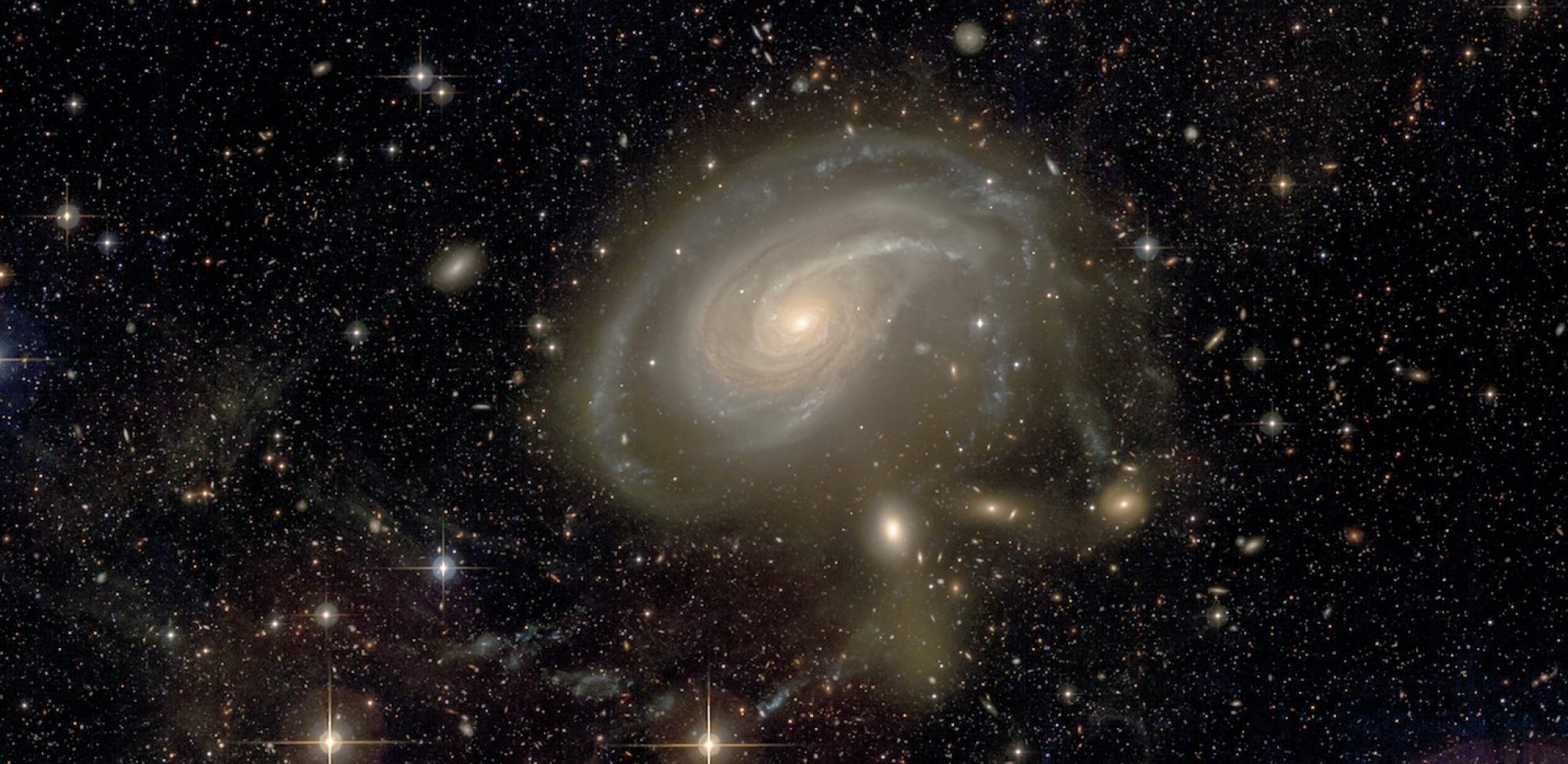
We study a compact nucleus embedded in an early-type dwarf galaxy, MATLAS-167, which is in the process of disruption by the tidal force of the neighbouring giant S0 galaxy, NGC 936, in a group environment. Using the imaging data of the MATLAS survey, we analyse the stellar tidal tail of MATLAS-167 and its central compact nucleus, designated as NGC 936_UCD. We find that NGC 936_UCD has a luminosity of Mg = -11.43 ± 0.01 mag and a size of 66.5 ± 17 pc, sharing the global properties of ultra-compact dwarf galaxies (UCDs) but significantly larger and brighter compared to the typical UCD populations observed in the Virgo cluster.
By integrating the total luminosity of both the tidal stream and MATLAS-167, we estimate that the disrupted dwarf progenitor possesses a luminosity of Mg = -15.92 ± 0.06 mag, a typical bright early-type dwarf galaxy luminosity. With the help of the optical spectrum observed by the SDSS survey, we derive the simple stellar population properties of NGC 936_UCD: a light-weighted age of 5.6 ± 0.7 Gyr and metallicity of [Z/H] = -0.83 ± 0.3 dex. Our findings suggest that tidal threshing is a possible formation mechanism of bright UCD populations in close proximity to giant galaxies.
Paudel et al., 2023, MNRAS 526L,136

